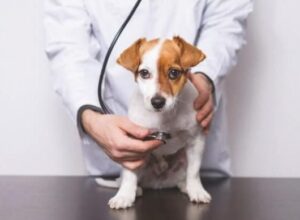Endoscopy: A Vet’s Third Eye
Pets eating of abnormal objects like mango kernels, balls, large chicken bones can become a nightmare for pet parents. Learn how endoscopy has proved to be a boon for vets.
–by Dr Dishant Saini, Dr Gajendra S Khandekar, Dr Santosh D Tripathi, Dr Shahir V Gaikwad, Dr Gaurav G Khandekar and Dr Harshal Patil
Generally, puppies and kittens are more prone to ingesting foreign objects because of their curiosity. Foreign objects obstruct the pathway and cause some serious damage to the respiratory and gastrointestinal tract of your pet.
This is the peak time where interventional surgeries are coming into action. But these can be risky and can have post-operative complications may become life threatening for your furry friend. If you want to bypass this risky situation for your pets than you must take a step towards advanced diagnostics and treatments provided by veterinary practitioners.
Excelling With Endoscopy
Thanks to veterinary medicine which is slowly coming at par with human medicine after decades of research, a cutting-edge and minimum invasive technology that’s being used by vets these days is endoscopy. This newer diagnostic technique can help vets diagnose and treat both dogs and cats in number of ways that they never able to do before.
Endoscopy means to look inside the body of animal with the help of endoscope. An endoscope is a small camera with a light source attached to it. This device (endoscope camera) allows us to get a good look at places inside the body that were previously not easy to access. It is a minimally invasive procedure to help diagnose different diseases like gastrointestinal conditions, abnormal cells, tumours and some forms of cancer, including lymphoma.

When Does Your Pet Need An Endoscopy?
When your pet is experiencing symptoms like vomiting, diarrhoea and weight loss, an endoscopy procedure may be recommended by your vet in order to further investigate gastrointestinal symptoms and conditions. If your vet has concerns about oesophageal or gastric foreign bodies, abscesses, ulcers and internal trauma, then also an endoscopy can be suggested.
This New-Age Technology Is Here To Help
Endoscopy may be recommended for many reasons in veterinary medicine, providing us with information that no other technique can provide. Some reasons we may use endoscopy include –
- To visualize an area, we cannot see on a routine examination and helping with advanced diagnosis
- To non-invasively collect samples of tissues for biopsy or culture
- To remove foreign objects from the oesophagus or stomach
- To perform certain surgical procedures in a less invasive manner
- To prevent surgical risk and other post-operative complications
- To help in retaining the normal body cosmetics
Know About The Risks
 Generally, an endoscopy procedure is safe. But as with any veterinary procedure, there are some potential risks and complications which will vary depending on the individual animal. Although rare, some dogs and cats may have an allergic reaction to the anaesthesia or a tear of the oesophagus, stomach or small intestine, which is known as perforation or tissue damage. There is also a risk of breathing difficulties in some animals especially in case of brachiocephalic breeds like pug following the procedure. Your veterinary practitioner will discuss the risks with you prior to any procedure taking place.
Generally, an endoscopy procedure is safe. But as with any veterinary procedure, there are some potential risks and complications which will vary depending on the individual animal. Although rare, some dogs and cats may have an allergic reaction to the anaesthesia or a tear of the oesophagus, stomach or small intestine, which is known as perforation or tissue damage. There is also a risk of breathing difficulties in some animals especially in case of brachiocephalic breeds like pug following the procedure. Your veterinary practitioner will discuss the risks with you prior to any procedure taking place.
How Is Endoscopy Performed?
It is a minimum invasive technique but, the procedure requires giving some extent of anaesthesia to the pet patients. Once the endoscope is inserted through the small incision made or any body cavity opening like oral cavity, the veterinarian is able to look around using the camera. An endoscope is a medical instrument that has a camera, microchip and light source at the tip, permitting transmission of a high-quality image to a computer monitor for the vet to view and interpret the condition of the area being examined.
With the help of joysticks veterinarians are able to move the tip of endoscope camera to see different angles and sides of your pet’s body. Air or water may be flushed through the endoscope to blow up areas like the stomach in order to better see all areas or to wash away debris or mucus.
Often when an endoscopic exam is recommended, it is because routine blood tests, urine tests, ultrasound, or x-rays have failed to provide enough information to diagnose or treat your pet. Since this is a minimally invasive procedure, it is often the next step in helping your pet. Early diagnosis and treatment are the keys to successfully treating your pet effectively. Endoscopy is one of the tools in diagnostic arena that vets can use to help achieve their goal and more efficiently help your pet.
Types Of Endoscopies
There are a variety of endoscopy procedures that can be performed depending on your pet’s symptoms, and all allow for samples to be taken. Samples are sent to a laboratory where a diagnosis can be confirmed.
- Esophagoscopy (endoscopy of oesophagus) – This is recommended for patients with dysphasia (a condition where the pet can grab food but can’t swallow) and experiences symptoms like excessive salivation, anorexia, and recurrent pneumonia.
- Gastroscopy (endoscopy of stomach) – An endoscopic examination of the stomach is indicated when the animal has signs compatible with gastric disease, such as vomiting.
- Duodenoscopy (endoscopy of small intestine) – It is done when your pet has intense diarrhoea and the intestines are thickened on abdominal palpation.
- Colonoscopy (endoscopy of colon) – This is done when colon disease is suspected. The symptoms include – increased frequency of defecation, small volume faces, constipation, blood and/or mucus.
Recovery Of Your Pet From An Endoscopy Procedure
 Endoscopy in pets is a one-day procedure and your pet will be discharged on the same day. Anaesthetic drugs used to sedate the patient can take between 12-24 hours to leave the body so they may be sleepy between this period after their procedure.
Endoscopy in pets is a one-day procedure and your pet will be discharged on the same day. Anaesthetic drugs used to sedate the patient can take between 12-24 hours to leave the body so they may be sleepy between this period after their procedure.
It is recommended that after the procedure your pet should be kept indoors for the rest of the day in a warm and quiet place as they cannot control their body temperature after general anaesthesia. You may notice that your pet has a cough following the procedure, which is due to irritation caused by the endotracheal tube used in the anaesthetic and this should get resolved within 48 hours.
Endoscopy is not only a minimally invasive way to evaluate the inside of organs but also an effective technique to reduce the human efforts along with time-saving ability. More ever, veterinary endoscopy can also be performed to evaluate the inside of body cavities including the abdomen (laparoscopy) or chest (thoracoscopy). So, there is no need for long and invasive incision. With this procedure, it has become a lot easier for vets to bring to you the correct diagnosis, while keeping your pet’s wellbeing in mind.
(Dr Dishant Saini, Dr Gajendra S Khandekar, Dr Santosh D Tripathi, Dr Shahir V Gaikwad, and Dr Harshal Patil are from Department of Veterinary Surgery and Radiology, Dr Gaurav G.Khandekar is from Department of Veterinary Medicine, Mumbai Veterinary College, Parel)







